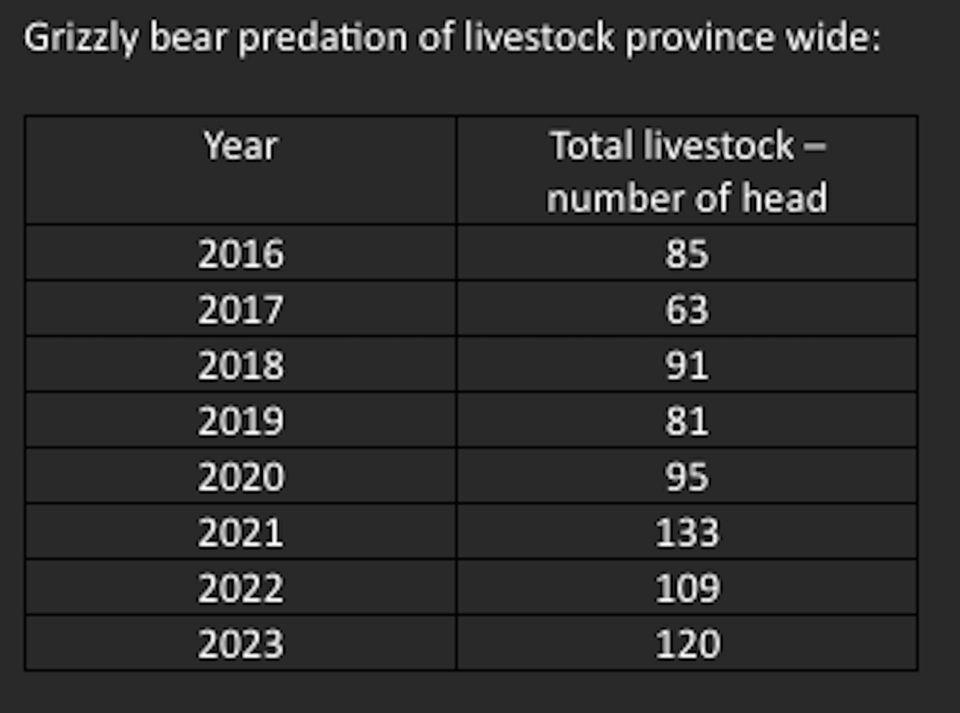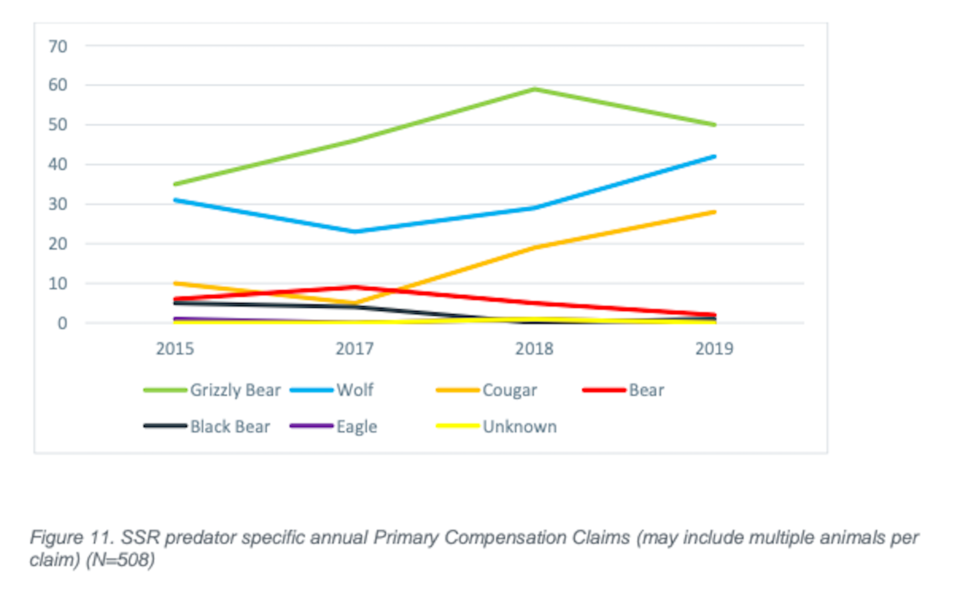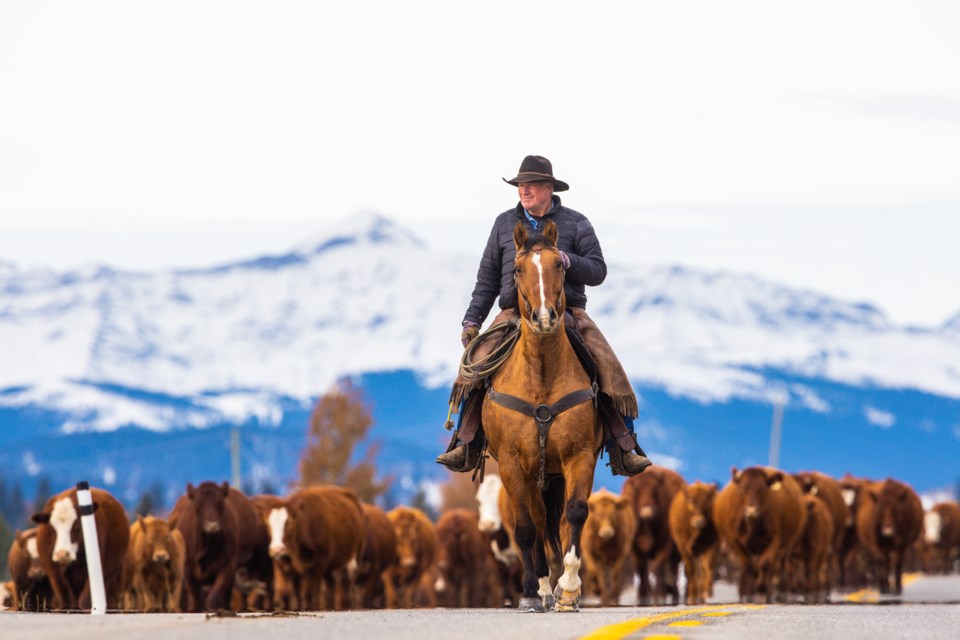While reports of bear and cougar attacks may seem to be more common in recent years, these occurrences are not new in the province of Alberta.
Over the years predation claims of livestock have risen, but a provincial wildlife specialist noted there are many factors contributing to this, not just an increase in wildlife numbers.
Ranchers and farmers lose livestock to predators every year, and for approximately the past 45 years, the Wildlife Predator Compensation Program has been providing compensation for those lost animals to ease financial losses for producers. According to the Government of Alberta, the compensation program is funded by dedicated revenue from the sale of recreational hunting and fishing licenses, and through monies provided by the federal government.
“The program is important to Alberta because there are an estimated 4.8 million cattle in Alberta, which is roughly 43 per cent of the Canadian market,” stated Pam Davidson, press secretary for Alberta Forestry and Parks.
Under the program, producers of cattle, sheep, goats and hogs are provided compensation for livestock that have been killed or injured by wolves, grizzly bears, black bears, cougars and eagles. Fish and Wildlife officers investigate each claim to verify they have been killed by a predator, after which claims are processed according to the geographic boundaries of the Fish and Wildlife Enforcement Service Districts.
“Grizzly bear populations have increased from between 600 to 800 in 2010 to around 1,100 bears in 2024,” stated Davidson. “Grizzly bear predation of livestock in Alberta is trending upward in recent years (2016-2023), but there have only been 48 compensation claims to date in 2024.”
Grizzly bear predation of livestock across the province saw 85 total claims in 2016, compared to 120 total claims in 2023, she noted.

In a phone call with Mark Heckbert, a provincial wildlife conflict specialist, he stated Alberta’s population has grown by 61 per cent in 25 years, expanding livestock industries over the years. Human settlement patterns and what people do on the land has been largely uncontrolled in Alberta, he added, and is part of the reason for an escalating conflict problem with wildlife. The increasing amount of attractants on a limited land base adds to those conflict claims.
A study that looked at the Fish and Wildlife Enforcement Districts that fall within Alberta's South Saskatchewan Region (SSR) between 2015 to 2019 showed that the majority of livestock claims were due to attacks from grizzly bears, wolves, and cougars.

Compensation through the provincial program is only paid for the loss of cattle, bison, sheep, swine and goats, and not horses, donkeys, or exotic animals such as llamas and alpacas, according to the Province of Alberta website. Compensation covers attacks by wolves, grizzly bears, black bears, cougars, and eagles, but not other predators such as coyotes.
Costs covered are the costs of veterinary care and medication associated with the incident or the loss of an animal, up to the average value of the animal.
To make a claim, producers must contact the nearest Fish and Wildlife office as soon as possible. An officer may request the carcass to be moved or covered to prevent the evidence from being lost to scavenging.
An examination will be conducted by an officer to confirm whether a predator killed or injured the animal. After this, the officer files the claim on behalf of the producer.
Alberta government allows more grizzly bear hunts
The Alberta government changed regulations on June 17, this year, to allow targeted hunts on what it terms “problem” grizzly bears after a nearly 20-year ban on hunting the threatened species.
The change received push back from conservation specialists, stating the decision was not made based on scientific data.
The province clarified that changes include defining a human-bear conflict as an incident where a grizzly bear is habituated or food-conditioned and “poses an imminent public safety risk” or if a grizzly has “killed livestock, damaged private property or made contact with a human resulting in injury or death.” A pool of eligible individuals will receive authorization to hunt a grizzly involved in a human-bear conflict or an area of concern.
-With files from Jessica Lee/ Local Journalism Initiative



